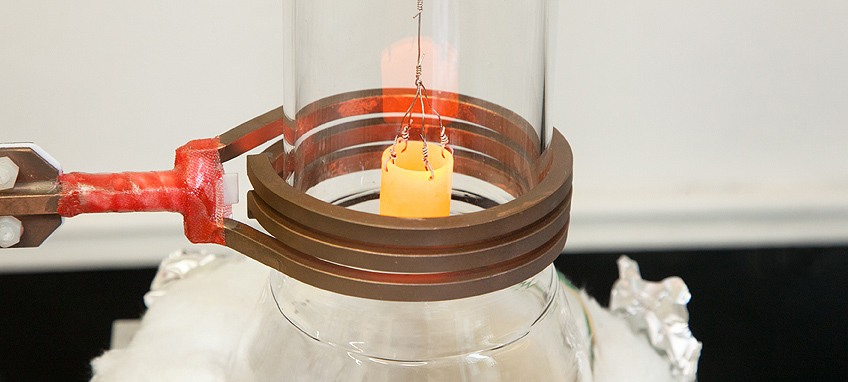
| Laufzeit: | 01.05.2018 - 28.02.2021 |
|---|---|
| Partner: | MTU Aero Engines |
| Geldgeber: | Bundesministerium für Wirtschaft und Energie über MTU |
| Bearbeiter: | Till König |
| Abteilung: | Materialien und Korrosion |
The substitution of the commonly used nickel-based superalloys by Ceramic Matrix Composites (CMC) for applications in the high temperature region of turbines is widely discussed and first parts are in service. The CMCs investigated within the scope of this study consist of silicon carbide matrices reinforced with continuous silicon carbide fibres. Interesting properties of SiC/SiC-CMCs are a high temperature stability in oxidizing atmospheres due to a high melting point and the formation of a protective silica scale, a lower density (~2.6 g/cm³), a higher specific strength and a lower creep rate at high temperatures in comparison to nickel-based superalloys. Therefore the efficiency of the turbines can be increased by using higher combustion temperatures and by reducing the mass of the moving parts. The fibre reinforcement results in totally different failure mechanisms compared to monoclinic, more brittle ceramics or metallic materials.
Even though SiC/SiC-CMCs show excellent temperature stability, the presence of water vapour can result in the volatilization of the silica scale by the formation of silicon hydroxide. The process of simultaneous oxidation and evaporation follows paralinear kinetics and makes it necessary to apply coatings on CMC used in turbine engines since the combustion produces significant amounts of water vapour. The common approach to address this challenge is the application of so-called environmental barrier coatings (EBCs) by thermal spraying, which are usually silicate-based coatings and therefore have a matching coefficient of thermal expansion. These coatings commonly possess a multi-layered structure, consisting of a silicon bond, one or several intermediate layers, and a silicate topcoat with a low silica activity. This low activity results in a decreased formation of silicon hydroxide when exposed to water vapour and therefore an improved corrosion resistance.
These silicate-based coatings are prone to cracking, which results in the formation of a silica scale on top of the silicon bond layer, eventually leading to severe corrosion or spallation of the coating. This study proposes a new approach to protect CMCs from water vapour. Via pack cementation different coating compositions will be applied to grow oxides different from silica. The pack cementation process was chosen because it allows to reliably coat the entire surface via the gas phase. The adhesion and corrosion resistance of the produced coatings will be tested by thermal cycling tests and exposure in water vapour-containing atmospheres. Furthermore the adhesion will be tested by 4-point-bending tests with simultaneous acoustic emission measurements.
zurück
T. König, B. Burek, M.C. Galetz, Journal of the European Ceramic Society (2023)